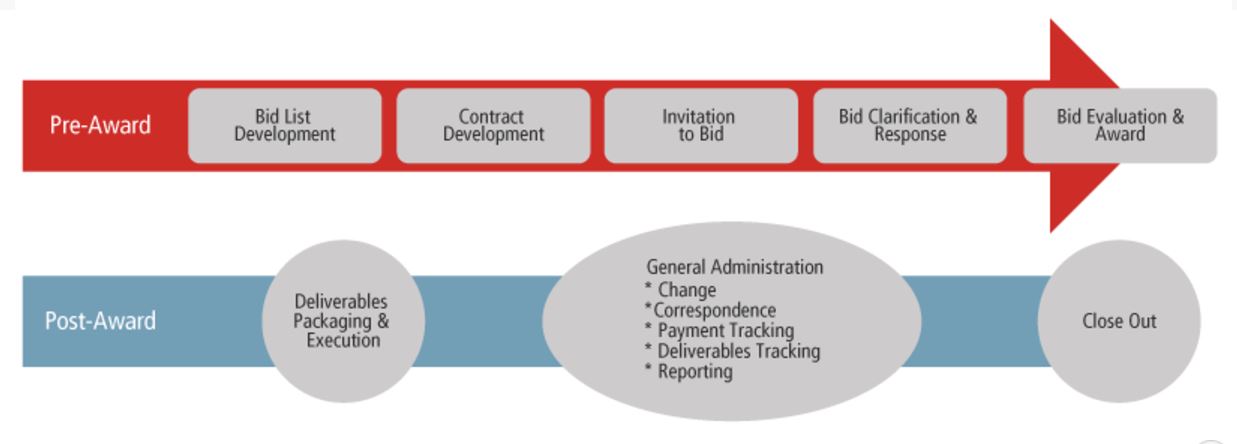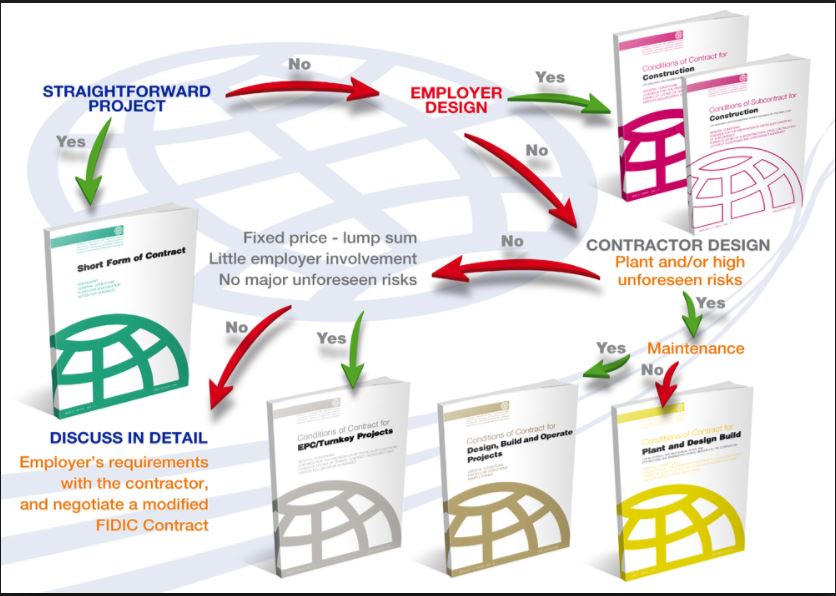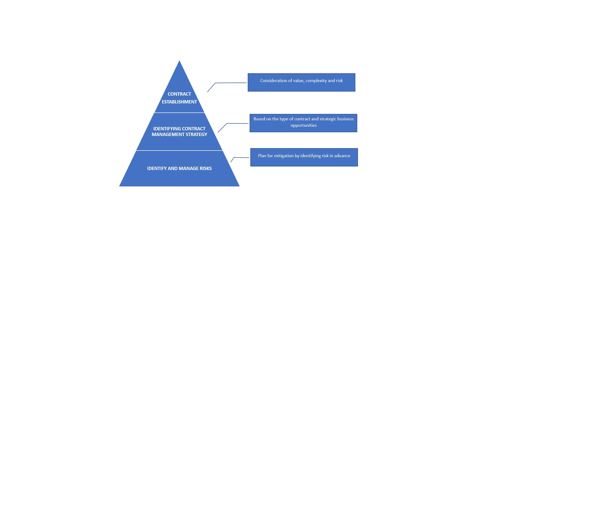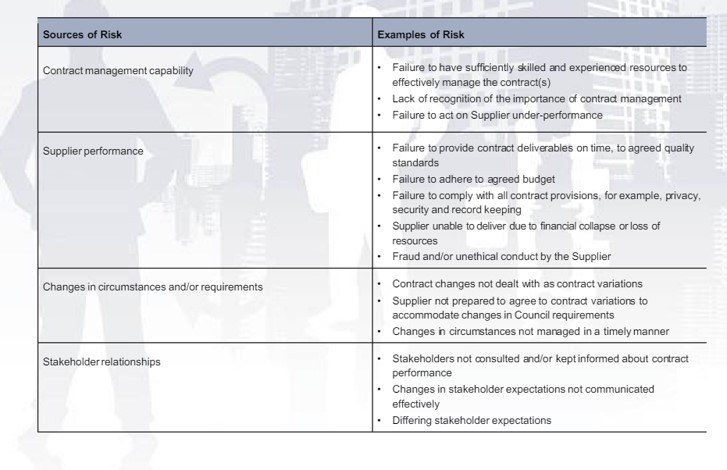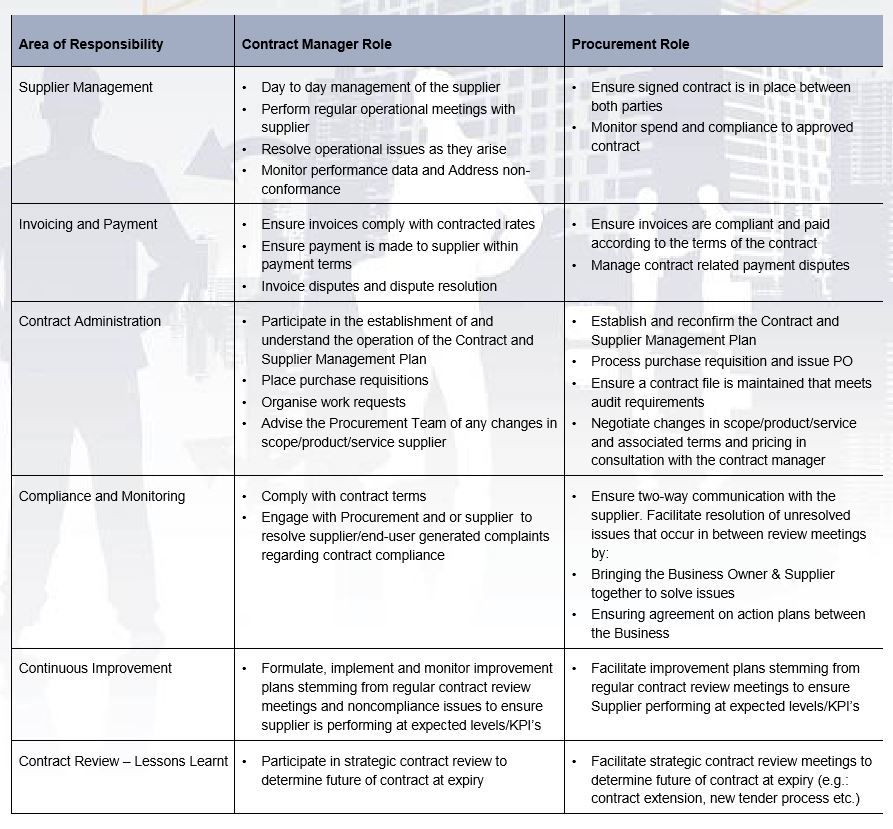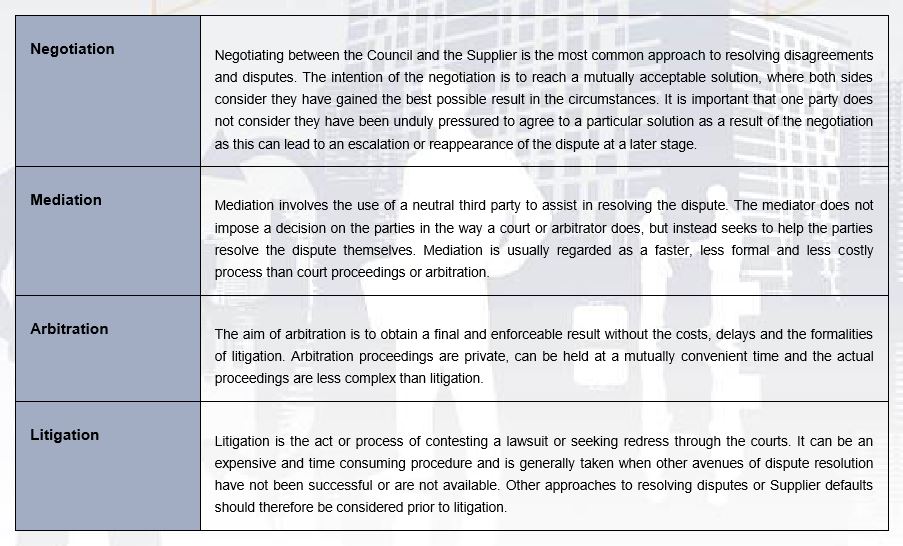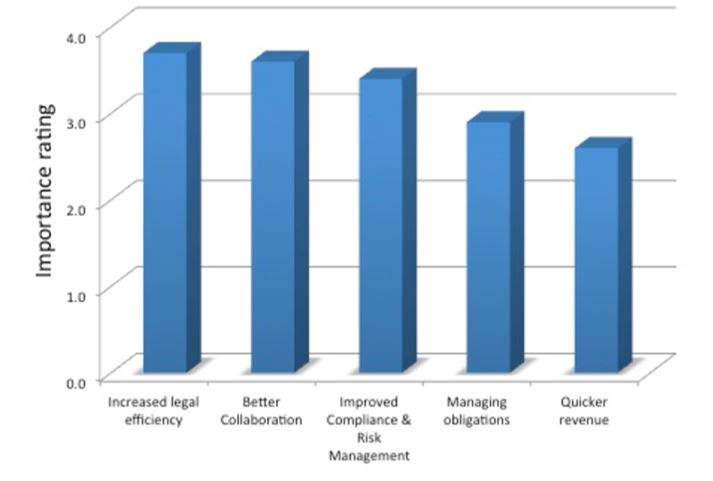Construction Contract Management Guidelines and Administration
Contract plays a vital role in project management, business strategies, and relationships. It is the foundation of value for the business. Organizations both in public and private are looking for efficient performance at a reduced cost. [1] They are now realizing the importance of contract management in delivering a successful project. Effective contract management can make or break organization's vision, strategy, and its reputation. The main goal of this article is to emphasize the need for contract management guidelines and administration. The project and organizational benefits derived from the application of the guidelines. It will also discuss the pre-award and post-award activities, processes and practices involved, and the critical success factors for good contract management. In addition, the article will also provide a background in contract management and its principles.
_____________________________________________________________________________________________________________________________________________
SECTION I - CONTRACT MANAGEMENT PRINCIPLES
__________________________________________________________________________________________________________________________________________________
1.1 WHAT IS A CONTRACT?
A contract is a legal document stating the obligations between two or more parties. The contract documents usually outline the principles of offer, acceptance, and consideration, it also defines the terms of payment, the principles of negotiation, the scope of work and the expected level of service.[2]
1.2 WHAT IS A CONTRACT MANAGEMENT AND ADMINISTRATION
Contract Management and Administration is the process of managing the end to end contract lifecycle to ensure that the parties meet their contractual obligations. It involves decision-making and timely flow of information to achieve project goal in conformity with the contract documents. In practice, this means optimizing the process efficiency, balancing costs and risks against returns and ideally aiming for a continuous improvement in performance over the life of the contract. One of the key aims of contract management is to fulfill the agreed contractual terms and conditions and achieve value for money. Moreover, effective contract management can be measured if;[3]
1 The arrangements for service delivery continue to be satisfactory to both customer and supplier;
2 Expected business benefits and value for money are being delivered;
3 The supplier is being cooperative and responsive;
4 All parties know their obligation in the contract;
5 There are no disputes;
6 There are no surprises;
7 The contract is fully compliant and satisfied both legislative and requirements.
1.3 CONTRACT MANAGEMENT PROCESSES
Figure 1: Pre and Post Award Activities[4]
1.4 ORGANIZATIONAL REQUIREMENTS FOR EFFECTIVE CONTRACT MANAGEMENT
To ensure efficiency in contract management. It is important for the organization to consider people skills and competencies. The type and level of resources required for contract management will vary for different types of contracts. Different levels of skills and competencies will be required for different types of contracts. Some will require the establishment of a contract management team while others will be managed by a single person.[5]
To carry out the contract management activities efficiently. The contract managers and other commercial team members must have appropriate skills and competencies to understand the task at hand in connection with the types of contracts they are dealing with. In addition, senior management should also provide leadership to ensure commitment to improvement.
1.5 TYPES OF FIDIC FORM OF CONSTRUCTION CONTRACTS
Some of the most common types of construction contracts used in the construction industry are the following:[6]
Figure 2.0 Fidic form of contracts
1 Green Book - Short Form of Contract, First Edition 1999
- The Short Form of Contract is recommended for engineering and building work of relatively small capital value. The Guidance Notes for the Green Book recommended that generally it should not be used on projects with a contract value greater than US$500,000.It is a flexible document containing all the essential administrative and commercial arrangements. The contents of contract book: (a) Agreement (b) General Conditions (c) Rules for Adjudication (d) Notes for Guidance.
2 Red Book - Conditions of Contract for Construction For Building and Engineering works designed by the Employer First Edition 1999
- The Red Book provides conditions of contract for construction works where the design is carried out by the Employer. The Red Book is intended for use on projects where the employer carries out the design but it also allows for some elements of the project to be Contractor designed. Payments are normally determined by measurement and applying the rates and prices from the bill of quantities. There is an option for payment to be on the basis of a lump sum. The contents of contract book: (a) General Conditions (b) Guidance for the Preparation of the Particular Conditions (c) Forms of Tender and Contract Agreement (d) Dispute Adjudication Agreement.
3 Red Book Multilateral Development Bank (MDB) edition- Conditions of Contract for Construction For Building and Engineering works designed by the Employer (MDB Edition 2005)
- The FIDIC MDB edition of the Red Book simplifies the use of the FIDIC contract for the MDBs, their borrowers and others involved with project procurement, such as consulting engineers, contractors, and contract lawyers. As part of their standard bidding documents, the Multilateral Development Banks (MDBs) have for a number of years required their borrowers or aid recipients to adopt the FIDIC Conditions of Contract. The contents of the contract book: (a) General Conditions (b) Guidance for the Preparation of the Particular Conditions (c) Forms of Tender and Contract Agreement (d) Dispute Adjudication Agreement.
4 Yellow Book - Conditions of Contract for Plant and Design-Build For electrical and mechanical plant, and for building works, designed by the Contractor First Edition 1999
- The Yellow Book provides conditions of contract for construction works where the design is carried out by the Contractor. It is applicable to the provision of electrical and/or mechanical plant, and for the design and execution of building or engineering works. Under the usual arrangements for this type of contract, the Contractor designs and provides the works in accordance with the Employer’s requirements which may include any combination of civil, mechanical, electrical and/or construction works. The contents of the contract book: (a) General Conditions (b) Guidance for the Preparation of the Particular Conditions (c) Forms of Tender and Contract Agreement (d) Dispute Adjudication Agreement.
5 Orange Book - Conditions of Contract for Design-Build and Turnkey First Edition 1995
- The Orange Book is intended for use on turnkey contracts, under which the Employer's requirements usually include the provision of a fully-equipped facility, ready for operation at the turn of a key. The exact Employer requirements will need to be fully detailed to describe the design, construction, fixtures, fittings, and equipment required to be provided by the Contractor’s design. The contents of contract book : (a) General Conditions (b) Guidance for the Preparation of the Particular Conditions (c) Forms of Tender and Agreement.
6 Silver Book - Conditions of Contract for EPC/Turnkey Projects First Edition 1999
- The Silver Book is suitable for use on process, power and private-infrastructure projects where a Contractor is to take on full responsibility for the design and execution of a project. Risks for completion to time, cost and quality is transferred to the Contractor and so the Silver Book is only suitable for use with experienced Contractors familiar with sophisticated risk management techniques. The Silver Book provides conditions relating to ‘Tests on Completion’ and Taking Over only takes place after successful completion of the tests. Such provisions are important for EPC/Turnkey projects where the purpose of the contract is to provide the Employer with a working facility. The contents of contract book: (a) General Conditions (b) Guidance for the Preparation of the Particular Conditions (c) Forms of Tender and Contract Agreement (d) Dispute Adjudication Agreement.
7 DBO Contract - Conditions of Contract for Design, Build and Operate Projects First Edition 2008
- The DBO contract adopts a “green-field” DBO scenario with a 20 year operation period and a single contract awarded to a single contracting entity (which will almost certainly be a consortium or joint venture) to optimise the coordination of innovation, quality, and performance, rather than award separate contracts for design-build and for operation.The document is recommended for general use where tenders are invited on an international basis. The contents of contract book: (a) General Conditions (b) Particular Conditions (c) Sample Forms.
____________________________________________________________________________
SECTION II - GUIDELINES IN CONTRACT MANAGEMENT AND ADMINISTRATION PRACTICES
_________________________________________________________________________________________________________________________________________________________________________
The key to successful post award contract implementation is to ensure that the pre-award activities (tender) are properly carried out. It is important that contracts are actively monitor throughout its lifecycle to help ensure supplier performance is satisfactory, stakeholders are well informed and all contract requirements are being meet.
2.1 PRE-AWARD CONTRACT MANAGEMENT PRACTICES
2.1.1 Planning for effective contract management
There are 3 key stages to consider in planning for effective contract management during the pre-award stage.
Figure 3.0 image from PMMS Contract Management Guidelines [7]
(1) CONTRACT ESTABLISHMENT
Some of the key issues that will determine the long-term success or failure of contract management include:
- Planning – to address issues such as what is the type of specifications involve, how many numbers of contractors needed, how long are the contract duration and the role of sub-contractors should be considered in procurement planning.
- Specification development - A Clear specifications that include measurable KPIs to reduce the risk of contract disputes, cost blow-outs and poor outcomes
- Contract Transition Planning - well-planned contract execution strategy that will ensure the expectations, roles, and responsibilities are clear in the transition to the contract management phase
(2) DETERMINING THE CONTRACT MANAGEMENT APPROACH
To determine the contract management approach, the contract management plan formation should be based on the assessment of key issues such as:
- Contract value;
- Contract complexity;
- Scale of risk and potential for risk mitigation through a sound contract management practice;
- Importance of the contract;
- Potential benefits and increased value available through contract management practice;
(3) IDENTIFYING AND MANAGING RISK
To ensure an effective contract planning, it is necessary to undertake a risk assessment to consider possible issues that might arise. Below figure 5.0 is a sample of contract risk.
Figure 4.0 Sample of Contract Risk. Image from PMMS Contract Management Guidelines [8]
2.2 POST-AWARD CONTRACT MANAGEMENT PRACTICES
Elements to be considered during the post-award contract management practices.
- Contract Administration and Record Keeping
- The management of the contract and changes to the contract document. It is required to manage the design specification, contractual agreement, variations, final accounts, claims and disputes
- Contract Management Roles and Responsibilities
- one of the elements to be considered in developing a contract management plan is the type and level of resource to manage the contract. Ensuring that the right people are in place to carry out the contract management activities is crucial. The below image outlines the typical roles in roles and responsibilities split between procurement and the operational contract manager:[9]
Figure 5.0 Sample roles & responsibilities split between procurement and operational contract manager[10]
- Managing Relationships
- Relationship management underpins successful contract management[11]. A good relationship should have been established in the earlier stages of the procurement lifecycle. Relationship management main goal is to keep the relationship between the two parties open and constructive to resolve and identify problems early.
Figure 6.0 Sample of A typical approach to managing relationships adopted in a long-term services contract.[12]
- Performance Management
- The process involves performance monitoring, performance assessment and taking appropriate action. It must be undertaken throughout the contract lifecycle for all contracts (simple or complex contract), Along with performance indicators and standards, arrangements for monitoring and assessment should have been set out and agreed in the contract along with the action that would result from non-performance.
- Contract Monitoring
- Focuses on collecting and analyzing information to provide assurance to the customer that progress is being made in line with agreed timeframes and towards providing the contract deliverables.
- Negotiating Contract Variations
- Provisions to allow and regulate reasonable contract variations should be a standard feature of all contracts. The ability to vary the contract should be directed or controlled by the customer and should only occur in defined circumstances. Variations should be undertaken in the line of change management. All the variations have the potential to affect the viability and scope of the contracts.
- Managing Contract Disputes
- Many disagreements and disputes arise when the parties cannot agree on issues related to the interpretation of contract provisions, the definition of deliverables, meeting performance standards and/or the effect of unexpected events. what a dispute is and when it is deemed to have occurred is defined in the contract, often in a dispute resolution clause. Avoiding the escalation of disagreements can impact on contract deliverables and reduce the costs to both parties. Dispute resolution processes may be a negotiation, facilitative or determinative or, in some cases, a combination of these.
Figure 7.0 Dispute Resolution process[13]
- Contract Completion
- The most common way a contract ends is where each party performs according to the terms of the contract, that is, the contract is discharged through due performance.
______________________________________________________________________________________________________________________________________________________________________
CRITICAL SUCCESS FACTORS FOR GOOD CONTRACT MANAGEMENT
____________________________________________________________________________________________________________________________________________________________________
1. Good Preparation
2. The right contract
3. Single busines focus
4. Service delivery management and contract administration
5. Relationship Management
6. Continuous Improveent
7. People skills and continuity
8. Knowledge
9. Flexibility
10. Change Managemnent
11. Proactivity
__________________________________________________________________________________________________________________________
DISCUSSION
____________________________________________________________________________________________________________________________________________________________________
The significant impact of contractual issues affecting the overall performance of an organization leads to a realization that proper contract management guidance and administration is necessary to ensure minimal contractual risk, claim dispute and as a project management tool for many individuals who find themselves undertaking project management responsibilities with little or no preparation.
A good practice contract management and administration like the guidelines has the capacity to increase revenue and opportunities, decrease cost and enhance service delivery for the project and the organization.
Figure 8.0 illustrates the benefits of efficient contract management through guidelines application.[14]
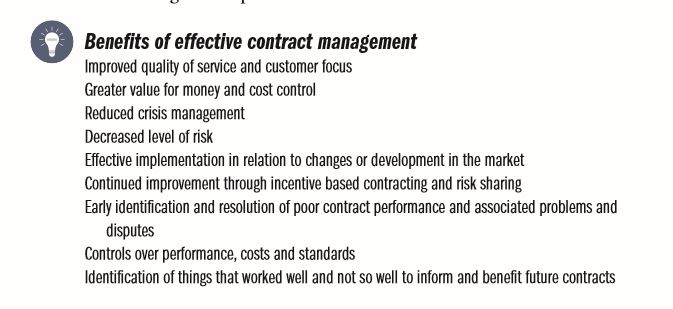
____
1.6 BENEFITS OF GOOD CONTRACT MANAGEMENT
Figure 6.0 Image from Business Integrity's 2013 Contract Management Survey.[15]
_________________________________________________________________________________________________________________________________________________________________________________________________________________________________________________________
CONCLUSION
____________________________________________________________________________________________________________________________________________________________________ The growing trend of globalisation
All over the world projects are losing billions of monies due to poor contract management. The factor affecting poor contract management can be attributed to many elements such as the lack of knowledge with regards to proper contract administration, the impact of globalization creating a thicker volume of the document, strict government rules and legislation, technological innovation like BIM, and speed of change in contracting norm.
________________________________________________________________________________________________________________________________________________________________________
REFERENCES:
1..2..3 https://www.cips.org/documents/CIPS_KI_Contract%20Management%20Guidev2.pdf
4 http://www.coreworx.com/effective-contract-management-in-engineering-and-construction-projects-pre-award-to-post-award/
5..8..9..10...11..12..13 https://www.scribd.com/document/196148989/Contract-Management-Guidelines
5 http://fidic.org/sites/default/files/FIDIC_Suite_of_Contracts_0.pdf
13 http://www.vanharen.net/Samplefiles/9789087537128_SMPL .pdf
7 http://www.metrocorpcounsel.com/articles/23582/business-integrity%E2%80%99s-2013-contract-management-survey-reveals-big-opportunities-saving
Cite error:
<ref> tags exist, but no <references/> tag was found
